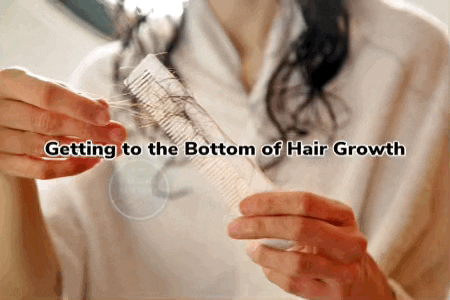Hair loss can make us scramble for the next best thing, whether it be miracle shampoos, scalp scrubs, topical medications, implants, etc. But how invasive are we willing to go?
As hair professionals or clients, you can find various hair growth stimulants, and research is still expanding! When considering the right plan for you, it is essential to consult a medical professional and weigh possibilities. Many remedies are applied to the top of the head, but how can we reach below the scalp? Would you dare consider scalp injections to contact the hair follicles? Could there be a less invasive way to stimulate hair growth from the root? In this article, we will discuss two therapies used to reverse hair loss.
The first corrective action being platelet-rich plasma scalp injections, and the second being low-level light therapy. Both treatments have been addressing hair loss since the early 2000s, with their discoveries dating back to the 60s-70s. More and more studies are utilizing each hair loss solution, but what do we know so far?
Below the Scalp
Hair growth is a complex process involving layers of connective tissue below the surface of the scalp. As the non-living hair shaft extends to the surface, other factors underneath the skin perform a function. At the hair follicle base, there’s a small area of tissue containing nerves and capillaries. A capillary is simply a blood vessel with thin walls that exchange nutrients and waste. This interaction with blood and nutrients builds the hair structure. The cells absorb the proper nutrients and then can continue their growth cycle.
 Platelet-Rich Plasma Therapy
Platelet-Rich Plasma Therapy
Now, what is platelet-rich plasma therapy? Signs of hair growth through the use of platelet-rich plasma(PRP) injections was noted in the 70s, as hematologist used the regeneration properties in other health trials. Around 2006, dermatologists started using PRP injection techniques to encourage hair growth. Medical professionals of Harvard Health Publishing describe the platelet-rich plasma theory as a way to reach the bottom of the hair follicle to stimulate cells that play an essential role in hair growth.
Why Platelets?
In blood, there are several components: red blood cells, white blood cells, plasma, & platelets. The platelets use growth factors to regenerate cells and are vital in healing. A dermatologist obtains your own platelet-rich plasma and injects it onto the scalp. Noted in Harvard Health Publishing:
“To yield PRP, blood is drawn from your arm, then spun down in a centrifuge (a machine that spins at high speeds to help separate blood components). After centrifuging, the plasma rises to the top, and the lower part of the plasma is the PRP. Sometimes, a second spin is performed to increase the platelet concentration of the plasma.”
Evidence suggests platelet-rich plasma treatments are most effective in hormone-related baldness. It is known as androgenetic alopecia and can affect both women and men. The hair loss pattern is typically visible at the top of the head, crown, and front of the scalp. When paired with topical medication, this injection therapy has shown positive outcomes for this particular hair loss condition. Injecting PRP has not demonstrated enough conclusive data when treating other types of hair loss. Typically, a therapy plan includes three injection sessions over three months. Clients will need to continue PRP injections to maintain their results; however, the practicing dermatologist will determine the frequency of injections.
 Low-Level Laser Therapy
Low-Level Laser Therapy
Alternatively, hair professionals are embracing a less invasive method to stimulate the hair follicle. Low-level laser therapy(LLLT) is a trending choice among trichologist today. This approach is painless, and it can prove to be less expensive than invasive treatments. Due to its regenerative and anti-inflammatory properties, lasers are treating a wide range of hair loss conditions.
Like platelet-rich plasma therapy, laser therapy has been used in various medical trials. Dating back to the 60s, the use of cold lasers has focused on healing injuries, and a variety of specialized medical professionals have studied its capabilities. Low-level laser therapy is considered safe when carried out by a trained professional.
 What is the Laser Doing?
What is the Laser Doing?
Using a cold laser, or one that does not generate heat, light penetrates tissue below the scalp. The mitochondria is the powerhouse of the cell and works like a battery, storing and releasing chemical energy when the light particles are absorbed. This energy stimulates receptors and produces a nutrient exchange within cells. As nutrients pass back and forth, the living cells communicate and actively work together. Evidence from low-level laser therapy trials note a decrease in tissue inflammation, increase transport of oxygen, and enhanced immune response.
As more research draws data, we’ll better understand the relationship between hair and blood. We know invasive and noninvasive techniques can stimulate hair growth in the epidermis. The health of tissue below the scalp is vital in hair growth. Trichologists and dermatologists alike hope to support their clients using a variety of techniques. Clients have many options to consider when searching for hair loss solutions. Consult your hair professional and remember the importance of below the scalp treatments.
For more information on laser treatments, follow our previous articles breaking down the use of lasers and low-level laser therapy.
Works Cited
Nathan, MD, MSHS, N., & Makredes Senna, MD, M. (2020, May 01). Platelet-rich plasma: Does the cure for hair loss lie within our blood? Retrieved January 26, 2021, from https://www.health.harvard.edu/blog/platelet-rich-plasma-does-the-cure-for-hair-loss-lie-within-our-blood-2020051119748
Contributing Editor
MaKayla Bartels
The Hair Society
Discover the Art of Hair






Leave A Comment